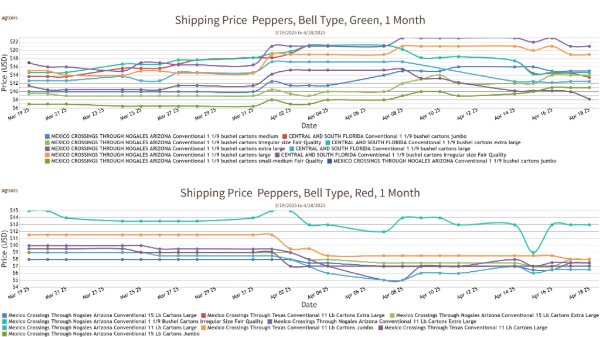Welcome to Blue Book!
Are you ready to join the thousands of companies who rely on Blue Book to drive smarter decisions? View our plans and get started today!
Still have questions? We’d love to show you what Blue Book can do for you. Drop us a line– we’ve been waiting for you.

Mangos are the ‘tastes like chicken’ of the fruit world; they are so commonly consumed that many other fruits, especially more exotic ones, are described by their similarity to the taste, texture, and scent of mangos.
The two most common mango varieties are from India and the Philippines. The latter, thanks to its higher tolerance for humidity, is the hardier of the two and makes up the Mexican variety most often found in the United States.
True or False?
Take our quiz to gauge your knowledge. For answers, historical tidbits, and interesting lore, read on!• Mangos were first grown in India over 5,000 years ago.
• Mangosteens are small, immature mangos and popular in Hispanic cuisine.
• Nearly 90 percent of Mexico’s population is Catholic.
• A nopale is a cactus native to Mexico.
• Pumpkins figure prominently in Day of the Dead celebrations.
• The pronunciation of chayote rhymes with “coyote.”
• Puerto Rican cuisine is virtually indistinguishable from Spanish cuisine.
• The pepino dulce, or ‘sweet cucumber’ is neither sweet nor a cucumber.
• Spanish lime, quenepa, and limoncillo are all superfoods.
• Plantains are related to, but distinctly different, from bananas.
• Yams and sweet potatoes refer to the same vegetable.
• There are many different varieties of sapote.
• Star fruit skins are inedible.
Mangosteens are small, very immature mangos and are quite popular in Hispanic cuisine.
FALSE! This round, tennis-ball sized fruit has purple, leathery skin and white, apportioned flesh (similar to citrus), but bears no resemblance to mangos— in appearance or flavor—other than its name.
Mangosteens are grown in Malaysia, Thailand, Indonesia, Myanmar, and parts of India from an evergreen tree. Often called the more descriptive purple mangosteen (though there is no evidence other colors exist), the fruit can be difficult to cultivate and has yet to thrive outside Southeast Asia—though not for lack of trying.
Planters in Hawaii and number of Caribbean countries have tried but not succeeded on a commercial level, though Puerto Rico has proven up to the challenge with limited quantities. In the United States, mangosteens can only be imported from Hawaii or Puerto Rico due to phytosanitary concerns, though fruit from other regions is legal in Canada, where it is gaining popularity.
Mangosteens are not a fixture of Hispanic cooking.
Nearly 90 percent of Mexico’s population is Catholic.
TRUE! While the religious demographics of Mexico are changing, with a particular increase in the Islamic and Mormon populations, 83 percent of Mexico’s residents are still Roman Catholic, with an additional 10 percent identifying as Christian with strong elements of Catholicism. This represents the second-largest Catholic community on Earth, behind only Brazil, and nearly half attend church services at least weekly.








